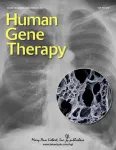(Press-News.org) In a survey of 545,531 people, 8.5% of those who said they were ‘fully accepting’ of gay people did not want gay neighbors.
First study to explore stigmatizing behaviors expressed by avid supporters of sexual minorities
‘Simple legal inclusion can help mobilize the accepting population to their fullest potential’
CHICAGO --- When legal systems choose to offer no protections to sexual minorities, even avid LGBTQ supporters would reject their gay neighbors, reports a new Northwestern Medicine study.
The study examined “superficial allies,” or those who express full support for sexual minorities while refusing neighboring proximity to them. The researchers found the absence of legal recognition and protection for sexual minorities at the national level increases sexual prejudice among both allies and stigmatizers.
The research is the first to explore stigmatizing behaviors of people who fully accept homosexuality. Previous research focused solely on people who reject homosexuality.
“While the power of legal exclusion in stigmatization is undeniable, its impact on ally behavior has never been explored,” said author Shahin Davoudpour, a postdoctoral research fellow in the department of medical social sciences at Northwestern University Feinberg School of Medicine.
“Everything we know from research is about the stigmatizing group,” Davoudpour said. “For example, in popular news, the rhetoric focuses on homophobic parents who become allies upon discovering their child is gay. What we don’t ever hear about is the opposite of this: You’re supportive of them, but once they come out, then you no longer want to be neighbors, colleagues or even friends. The dynamic behind this inconsistency between acceptance and inclusion is what I study.”
The study was recently published in the journal Sociological Research Online.
Legal inclusion is the degree to which a society’s legal institutions recognize and protect one’s identity. It can play a powerful role in the reduction of stigma, even among allies, Davoudpour said.
The large, survey-based study examined data from 113 countries with varying degrees of legal inclusion for sexual minorities.
“The more legal protection that existed, the less likely people were to reject association with homosexual neighbors in both stigmatizer and ally groups,” he said.
In the study, 545,531 survey respondents stated their sexual prejudice by choosing between 1 and 10, with 1 being “non-accepting of homosexuals” and 10 being “fully accepting.” Of the 55,523 respondents who rated themselves as a 10 (or “fully accepting”), 4,714 respondents (8.5%) said they did not want a homosexual neighbor. (Read Table 3 in the study for more information.)
“Even though structural change is much slower than individual-level intervention, Dr. Davoudpour’s study clearly demonstrates the impact of policy change (and sustained change) on improving the acceptance of minoritized individuals,” said Gregory Phillips II, assistant professor of medical social sciences and preventive medicine at Feinberg.
Legal inclusion reduces stigmatization from ‘superficial allies’
In the past 50 to 60 years of stigma research, Davoudpour said once a society achieves acceptance of a minority group, it tends to forget to fight for that group’s legal rights and inclusion. But he said, based on these findings, this is the wrong approach because these “accepting” groups might still refuse to fully integrate with the stigmatized group.
“We always talk about the people in the middle who can be swayed either way, but we believe the ‘fully accepting’ have dug in their heels, wearing their ally t-shirt proudly,” Davoudpour said. “What I say is that when legal protection for the stigmatized is removed, they have the potential to become stigmatizers. This study shows how allies need certain social and legal infrastructure to flourish into stronger supporters and genuine advocates.”
Davoudpour said a recent example of this is when Pope Francis said, “Being homosexual isn’t a crime,” but likened it to a “sin.”
“This started to get mocked, with people saying, ‘It’s not a crime, but I still go to Hell?’ But I believe that’s not true,” Davoudpour said. “If we change the law to include and protect the stigmatized, even if their rhetoric says it’s a ‘sin,’ we can mobilize the accepting group to their fullest potential. That’s how meaningful change will come about, that’s the key message.”
Why does stigmatization among ‘allies’ happen?
Superficial allies might be afraid of “courtesy stigma” (stigma by association) when there is no legal protection for sexual minorities, Davoudpour said. For instance, it’s easier to be mistakenly associated with groups with invisible stigmas, such as HIV status or sexual orientation, versus those with visible stigmas, such as race, gender, skin color, etc.
“In absence of legal protection, these fully accepting people might think they can be rejected if they hang out in proximity of gay people,” Davoudpour said. “Perhaps, they are using this as some sort of defense mechanism. ‘I can’t be seen with you because I might get fired. If I don’t punish you, they will punish me.’”
END
Scientists find that a tubular nanomaterial of carbon makes for ideal host to keep quantum bits spinning in place for use in quantum information technologies.
Scientists are vigorously competing to transform the counterintuitive discoveries about the quantum realm from a century past into technologies of the future. The building block in these technologies is the quantum bit, or qubit. Several different kinds are under development, including ones that use defects within the symmetrical structures of diamond and silicon. They may one day transform computing, accelerate drug discovery, generate unhackable networks and more.
Working with researchers from several universities, scientists ...
INDIANAPOLIS -- LOINC® from Regenstrief Institute is issuing its semi-annual release, which contains 608 new concepts to help health systems, laboratories and other health organizations accurately exchange medical data. Some of the new information has been released in coordination with the U.S. Food and Drug Administration, the U.S. Centers for Disease Control and Prevention and the Association of Public Health Laboratories.
“Aligning the release of LOINC with emerging healthcare trends is an important component of our mission and critical in promoting effective health information exchange among providers, patients and health systems,” said Marjorie Rallins, ...
New research pinpoints a key cause of metastasis from an aggressive form of brain cancer in children and provides a potential new therapy for treating these tumors in the future.
In a paper, published in Nature Cell Biology, physician-scientists from the University of Pittsburgh and UPMC Children’s Hospital of Pittsburgh discovered that medulloblastomas hijack a skill that normal brain cells use during their early development and then manipulate it to help tumors spread.
“Children with medulloblastomas that have not yet metastasized may have a high likelihood of long-term survival, but if ...
March 6, 2023, Mountain View, CA – Wouldn’t finding life on other worlds be easier if we knew exactly where to look? Researchers have limited opportunities to collect samples on Mars or elsewhere or access remote sensing instruments when hunting for life beyond Earth. In a paper published in Nature Astronomy, an interdisciplinary study led by SETI Institute Senior Research Scientist Kim Warren-Rhodes, mapped the sparse life hidden away in salt domes, rocks and crystals at Salar de Pajonales at the boundary of the Chilean Atacama Desert and Altiplano. Then they trained a machine learning model to recognize the patterns and rules associated with their distributions ...
Boulder, Colo., USA: Oklahoma State University is hosting the 57th annual meeting of the Geological Society of America’s South-Central Section on 13–14 March. The meeting will have a diverse program of workshops, technical sessions, short courses, and field trips that covers a spectrum of geologic disciplines.
The list below highlights a selection of environmental-related session topics you might like:
· Tar Creek Superfund Site Field Trip (Field Trip)
Managed Aquifer Recharge in the Arbuckle Simpson Aquifer (Field Trip)
Geoscience Career Workshop: Career Planning and Networking
· Hydrogeologic Challenges and Roles ...
Pancreatic cancer is an incurable form of cancer, and gene therapies are currently in clinical testing to treat this deadly disease. A comprehensive review of the gene and cell biotherapies in development to combat pancreatic cancer is published in the peer-reviewed journal Human Gene Therapy. Click here to read the article now
The article titled “Pancreatic Cancer Cell and Gene Biotherapies: Past, Present and Future,” contributed by corresponding author Pierre Cordelier, from the University of Toulouse, and coauthors, ...
“In the last several years, the Hemoglobin, Albumin, Lymphocyte, Platelet Score (HALP) has emerged in the literature as a new prognostic biomarker [...]”
BUFFALO, NY- March 6, 2023 – A new review paper was published in Oncotarget's Volume 14 on February 25, 2023, entitled, “What is hemoglobin, albumin, lymphocyte, platelet (HALP) score? A comprehensive literature review of HALP’s prognostic ability in different cancer types.”
Since its inception, the Hemoglobin, Albumin, Lymphocyte, Platelet (HALP) Score has gained attention as a new prognostic biomarker to predict several clinical outcomes in a multitude ...
Compared with men, women continue to have a roughly 30-40 percent higher risk of dying following coronary artery bypass surgery, according to a large study led by investigators at Weill Cornell Medicine and NewYork-Presbyterian/Weill Cornell Medical Center. The analysis showed that, without adjusting for differences in age and other health factors that influence risk, the female bypass patients had a 2.8 percent rate of death during or soon after surgery, compared with 1.7 percent for male patients, a nearly 50 percent difference that only dropped 10-20 percent after accounting for these factors.
The study, which appears Mar. 1 in JAMA Surgery, was based on ...
It is well established that folic acid supplementation can significantly reduce the risk of birth defects, including neural tube defects like spina bifida, the most common birth defect of the central nervous system and the second most common of all structural birth defects. More than 80 nations, including the U.S. 25 years ago, have established mandated folic acid food fortification programs, which have been successful.
“However, there is a lack of research on whether excessive folic acid intake has the potential ...
DANVILLE, Pa. – A Geisinger meta-analysis of recent research on the genetics of cerebral palsy (CP) provides evidence that genetic testing should be offered as the standard of care for people with the disorder, similar to current recommendations for individuals with other neurodevelopmental disorders (NDD). The findings were published Tuesday in JAMA Pediatrics.
Individual cases of CP—a condition that affects movement, balance and posture—have often been attributed to birth asphyxia, although recent studies show that asphyxia accounts for less than 10% of cases. A growing body of evidence suggests that a significant proportion of CP is caused by genetic changes, ...




